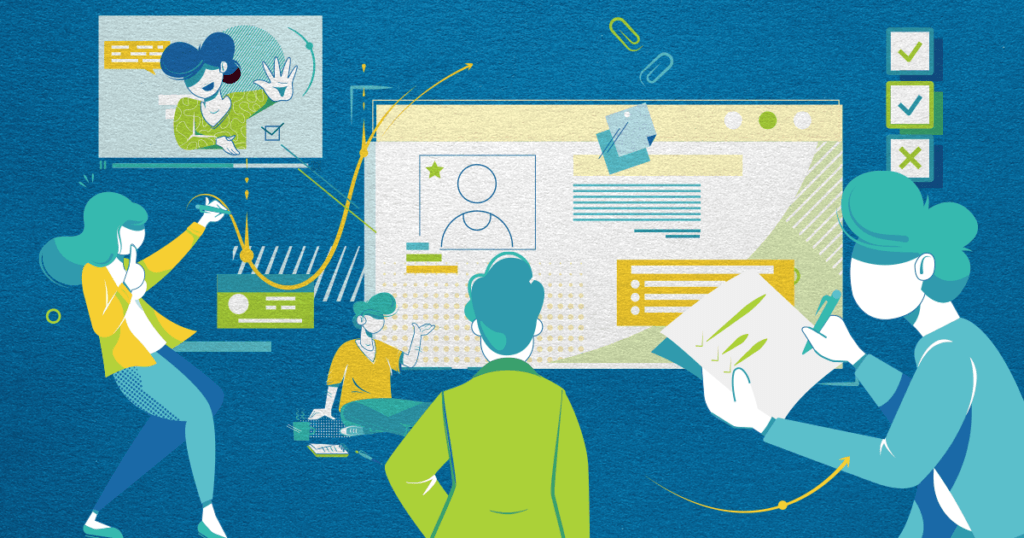Remote Employee Onboarding: Tips From The Experts
"The cobbler’s children have no shoes."
When it comes to remote employee onboarding, this truism totally applied to SweetRush until we finally decided to do something about it.
SweetRush has been a virtual company since 2009. Since that time, we’ve developed a reputation for being a trusted custom learning provider and virtual learning consultant. As such, we’ve been called upon many times to help our client-partners be successful at new hire onboarding, oftentimes in a remote setting.
As we grew, it became clear that we needed to "practice what we preach" by empowering our own team with an exceptional new hire orientation program. This topic had been on the table for a while, but as it usually happens in busy companies, internal initiatives are easily put onto the back burner until they move from a nice-to-have to a critical need-to-have.
We converted to a 100% remote workforce 10 years ago, and since then we have grown incrementally year after year. And while new hires were being trained in their roles by each team, having a standard new hire program was becoming more and more a company-wide need. So, in June 2019, getting this program implemented became an objective and a priority for me and the SweetRush team.
And that’s how our journey began...
If you are currently facing a similar challenge transitioning into a remote work environment due to the COVID-19 pandemic, here is the process we followed to get a successful remote employee onboarding program in place.
Why Is Remote Employee Onboarding Important?
Providing new hires with the guidance and tools they need helps ensure engagement, accountability, and retention. It's also the gateway opportunity for new hires to feel embraced by your company culture. For remote employees, ensuring a smooth starting curve and infusing them with cultural values becomes even more important.
When you provide your new hires with the foundation of the knowledge they need, they can engage in their new role more confidently since you are making sure they already understand the general landscape. The orientation program is your chance to provide new hires with enough nuts and bolts and enough cultural orientation, so they can focus on their new job—which is challenging enough!
And along the way, through the onboarding experience, you can demonstrate to the new hire just how effective your organization is at managing remote teams.
Begin With The Outline And Learning Objectives
I first spent a few days building an outline with the main topics to cover in our orientation experience. Once I had the first draft, I shared it with all the team managers to gather their feedback and validate the topics and learning objectives for each one.
When drafting this outline, you need to decide what is important and what is not. You need to decide the balance between culture and the nuts and bolts. You need to decide what you really need to teach them and what they will learn on the job. And assuming your workforce is distributed and global like ours, it's super important to analyze the information so it is consistent for your global talent.
You might want to consider things like:
- Company history
- Mission
- Values
- Culture
- Services/products
- Security and technology guidelines
- Tools and best practices
Certainly, these are relevant for all onboarding practices. However, when onboarding remote workers, you might want to add some specific resources, tips, and tricks for the remote worker. For example:
- Provide new hires with a buddy, another remote team member who can help guide them through the early stages of their onboarding process (answer basic questions and provide support).
- Schedule one-on-one meetings with your new hire throughout the first few weeks as a way to check in and make sure they’re feeling familiar with your system of working remotely.
Move From Outline To Structuring Of The Content
Once our content outline was ready and had been reviewed—with feedback and an ultimate thumbs-up from the management team—our next step was to structure the content in a digestible format for the new hire. We needed to take into account the virtual nature of onboarding.
We considered things like:
- How much can they absorb in one sitting?
- How long do we want the entire onboarding experience to be?
- Do we want to make it a one-day thing, or should we spread orientation over several days?
You need to make sure you don't overwhelm your new hire with information and tasks in a single chunk. Our solution was to create a 3-day orientation program that takes an average of 10 hours to complete. This gives our new team members the opportunity to learn, reflect, adjust, and ask questions, without feeling rushed or over-tasked.
Ensuring Engagement In Remote Employee Onboarding
SweetRush creates engaging learning programs for our clients, so it was essential for us that our remote employee onboarding experience was reflective of what we provide to them. We had to find ways to engage our new hires so the experience was positive and reflective of training done right. And most importantly: to not be boring.
Here are some of the things we included to engage our new hires:
- We have an amazing culture, something we are certainly proud of. A huge part of the caring culture is thanks to the authentic leaders we are lucky to have at SweetRush. So we share a welcome video from our co-founder Arturo Schwartzberg. He gives new hires a sense of the good energy that is at the heart of our company culture. It’s a great way to start their journey at SweetRush. This video is intentionally not polished to create more of an authentic and sincere welcome to SweetRush.
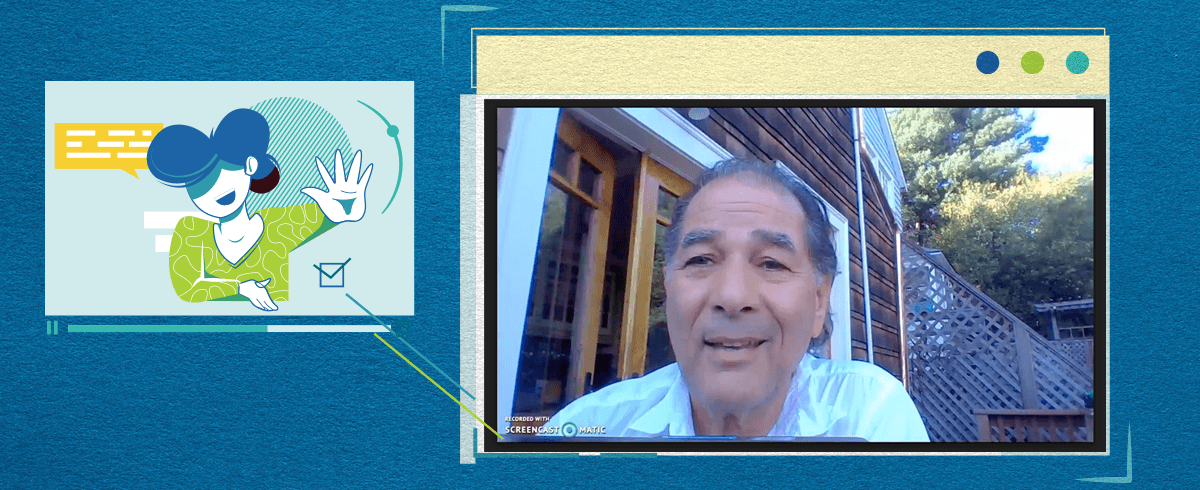
A friendly welcome video shows new hires the personal face of the company.
- SweetRush is full of artists. Taking advantage of the amazing talent we have, we created our own culture book, a piece full of art, love, and caring. This serves as a beautiful way to reflect and transmit our internal culture to our new hires.

Show off your company culture, your passion, and your brand in a helpful onboarding guide.
- Efficiency and productivity is a key component of our daily work. As part of their initial learning, new hires take a productivity webinar series hosted by our organizational effectiveness director.
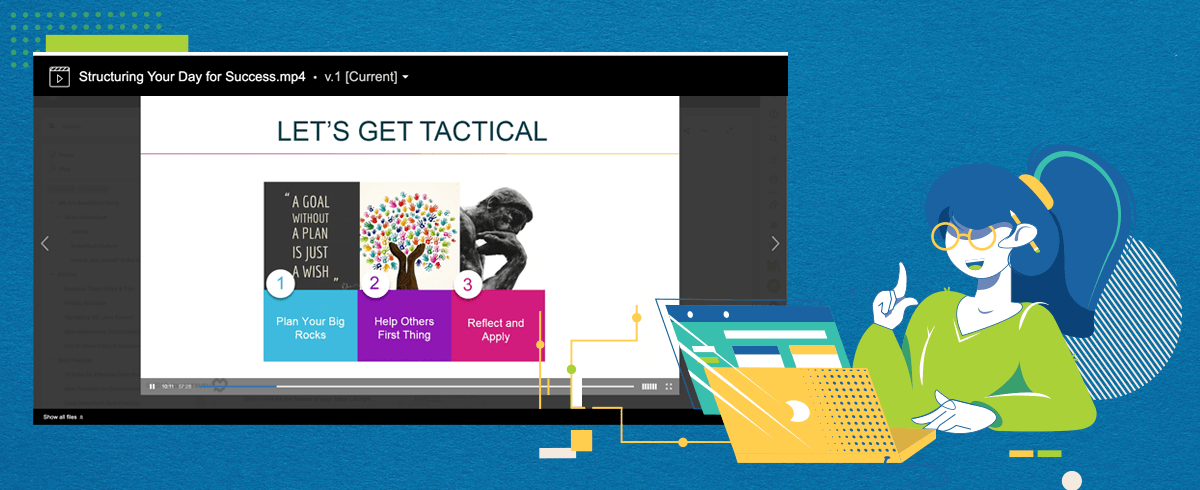
Webinars are a great way to bring fresh voices to the learner and introduce concepts in a new way.
- When working remotely, one thing you can easily assume—but shouldn’t—is that everyone knows and has the tools to conduct successful remote meetings. We set up a time with new hires to chat and test basic things like audio, video, and screen-sharing tools.
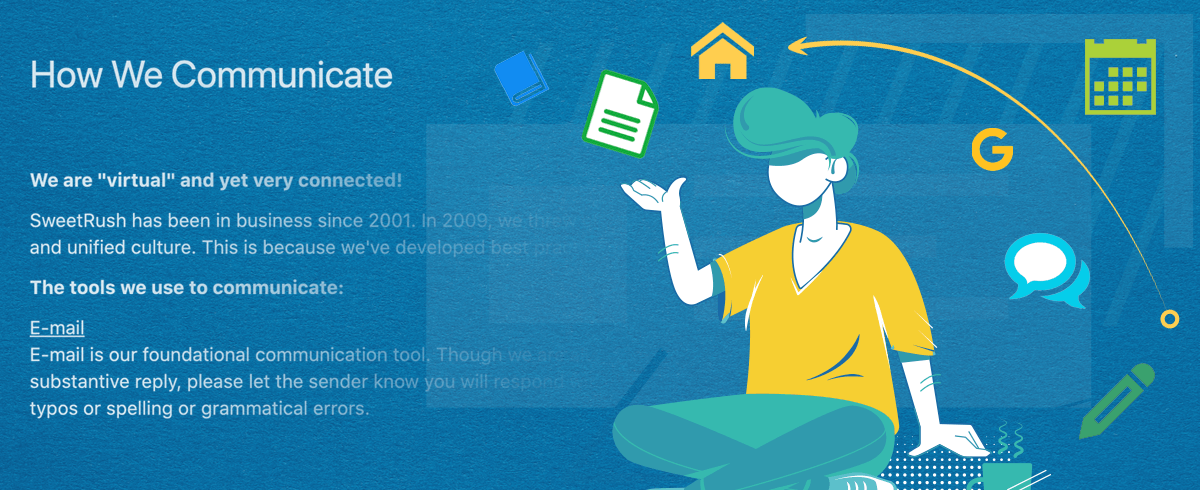
We use a variety of communication tools based upon our needs. Onboarding includes testing and answering questions about each tool to ensure new hires are ready to engage with their teams.
- With the help of one of our talented Instructional Designers, we created a New Hire Trivia Game to test how much they learned by the end of their orientation. They can test their knowledge and have a little fun in the process. This also helps us gauge the success of our program and gives us indications of where we can improve.

No, it's not an exam. And it can help you gain insight into your onboarding program.
- New hires also receive a learning map and orientation schedule. This map helps them stay connected and on track with their daily assignments during the first few weeks of their job.
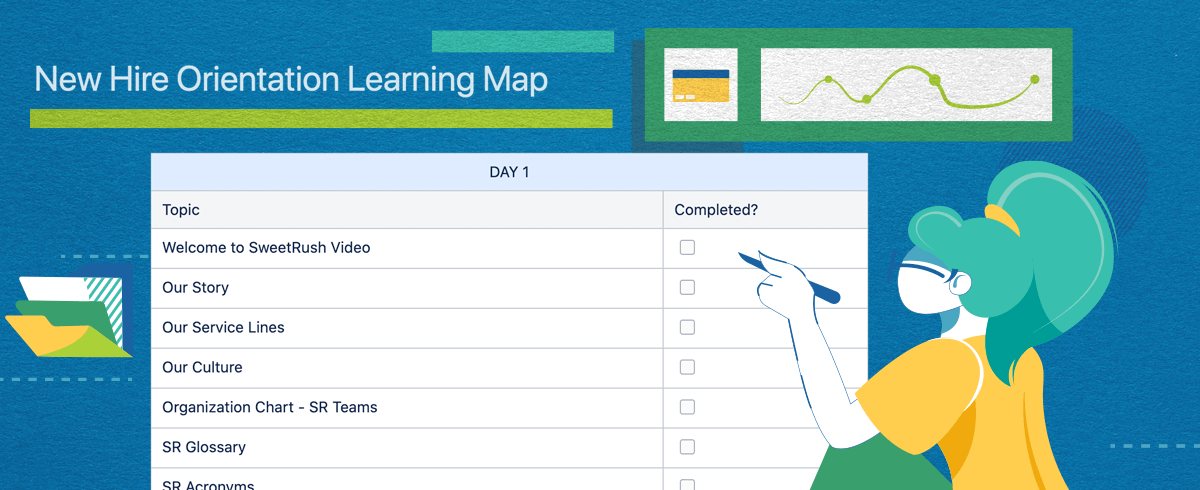
Maps help new hires keep track of their tasks and prevent them from feeling lost or overwhelmed.
Determine The Technical Details And Develop Your Content
A key component of your remote employee onboarding program is the platform you choose. Make sure you select a user-friendly, easy-to-navigate platform for your new hires, so they don’t face technical issues or difficulties accessing the information.
You also want to think about yourself as the administrator or the people in charge of keeping the orientation deck updated. Keep in mind that you don’t want to have to update a bunch of different systems every time something changes. Our clients are always concerned with shelf life and ease of updating, and so are we.
I was lucky enough that everyone at SweetRush is awesome at documenting processes and generating instructional content (of course we are, that’s what we do!) so most of the onboarding content already existed in our internal knowledge base. If you're generating new content and enlisting support from SMEs—company leaders and department heads, for example—be sure to provide guidance on what format will best suit your program and your learners.
Test And Get Feedback!
Once we had our remote employee onboarding solution ready to launch, we wanted to make sure that it worked. We chose some lucky just-hired SweetRushians and asked them to go through the orientation to test it out and provide their feedback.
We used this same exercise to measure the time required over the 3 days to complete the orientation. As with any human-facing experience, if you can test your solution before going live, you’ll no doubt get great feedback and insights from users you had not foreseen. And of course, bugs might emerge.
After that pilot evaluation, we felt confident to launch the program. But that doesn’t mean your work is done. Things are always changing and evolving. You have to constantly make adjustments based on feedback from new hires and the changing reality of your work environment. New hires are like your clients in this scenario and their input is necessary to determine if your program is working, adding value, and making a positive impact.
As a virtual company, we know how critical employee onboarding is to ensure the new hire has the knowledge and tools to allow them to feel confident in entering a new work environment.
There is a quote from Simon Sinek that I love and use in my email signature because I believe it to be absolutely true: "Customers will never love a company until the employees love it first."
Orientation is your golden opportunity to start the love affair between your new hire and your company. If you did your remote onboarding experience right, new hires should feel they made a great choice in joining your company.

